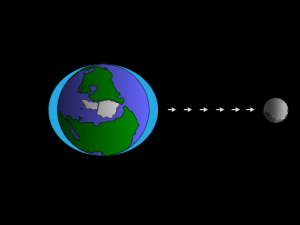Discovering the Intertidal Zone

The Joys of Tide Pooling and Beach Combing with Melanie Collins
This winter we’re posting a series of interviews with Portland Paddle guides, each one focused on a specific topic related to paddling the Maine coast. Today we’re sharing a conversation with Melanie Collins about the intertidal zone! Melanie is a registered Maine guide, ACA sea kayak instructor, environmental educator, and nature and outdoors writer.
Are you unfamiliar with the term intertidal zone? Or not sure how the tides work? Scroll down to below Melanie’s interview where you’ll find a brief explainer on tides that answers these and other questions.
Q: What do you like about tidepooling in Maine?
Melanie: There’s so much to observe, and so many good places to do it. Tide pools form in intertidal zones made of boulders or bedrock, where indents can hold water like a bowl. Maine’s famously rocky coast is perfect for it. I used to teach a tidepool class in southern California. It’s hard there, because the ‘tide pools’ are just jagged rocks. Here we have a little more of a gradual slope into the sea and large quiet pools are left behind by the receding tide.
Q: Why do you find intertidal animals so fascinating?
Melanie: Tide pool creatures are some of the toughest creatures in the ocean. Tougher than the creatures that live in the deep and the dark. Tougher than the creatures who migrate thousands of miles. Tide pool creatures deal with predators from the land and the sea, they live through enormous daily changes in temperature, salinity and even oxygen availability (imagine if you had six hours stretches where you couldn’t breathe??). They withstand crashing waves and rocks. They’re incredible! I mean just look at a barnacle. That thing is indestructible! So small and so strong.
Q: What’s one of your favorite things about tidepooling?
Melanie: I love a really low, low tide because I’m always searching for echinoderms! Echinoderm means “spiny skin,” and they are things like sand dollars, sea cucumbers, urchins, and sea stars. They live in the very lowest sections of the intertidal zone, so they aren’t exposed very often or for very long, and have nice deep tide pools to stay safe in. My favorite echinoderms are urchins, and once I found a sea star right off Fort Gorges! They’re rare. They typically stay below the low tide mark and are often hidden underneath the rockweed.
Q: What advice do you have for people who are going tide pooling or exploring the beach at low tide?
Melanie: My advice to people would be stay quiet and look close. The creatures in the tide pools are small and well camouflaged. But if you focus on the tiny world at your feet, all sorts of beautiful things will emerge.
And leave the hermit crabs there! They like their pools and you don’t need them!
Intertidal Zone Basics

Different sections of the intertidal zone are home to different species – graphic courtesy of Outer Island Ecological Preserve
What is the intertidal zone?
It’s the area of the shoreline that’s underwater at high tide and out of the water at low tide – the band of land that’s sometimes dry and sometimes wet.
Is every intertidal zone the same everywhere?
Nope! Intertidal zones vary depending on the sediment (mud, sand, gravel, or bedrock), wave and current energy, the upland environment (dunes, cliffs, forest, etc.), water salinity, and the organisms that live there.
What do organisms living in the intertidal zone need to survive?
All the animals, plants and seaweeds (technically a type of algae) living in the intertidal zone must contend with the challenges that come with being covered by seawater sometimes and exposed to the above-water world the rest of the time. And they must be able to cope with changes in water temperature, pH, and salinity. To survive in this environment these organisms have evolved a wide range of adaptations that include closing themselves in shells (like barnacles), moving to deeper water or into tide pools to avoid exposure, and burrowing into sand and mud.
What causes tides?
Tides are caused by the moon, and to a lesser extent the sun. As the moon orbits around the earth its gravitational force draws the water that is closest toward itself (towards space!). Here on the earth’s surface we experience this gravitational pull as water covering and uncovering sections of shore and as tidal currents strengthening, weakening, and shifting direction.
Are tides the same everywhere?
Nope! Tides vary all over the world and even from bay to bay on a local scale. Tidal range, which is the distance between the level of the water at low tide and at high tide, changes constantly due to the positioning of the moon, the sun and the other planets. And the timing of the tides varies by geography. Here in Maine the tidal range varies from 8 feet to more than 19 feet, and we have a sem-diurnal tide cycle, which means we have two high tides and two low tides each day. In other parts of the world, there’s just one high and one low each day.

Water on the earth’s surface is pulled towards the moon, creating high tides in some places, and low tides in others – graphic courtesy of NOAA SciJinks Weather Education
How do tides affect paddlers?
Tides can affect paddlers in a number of different ways. They can create currents which affect our pace and navigation, change where it is feasible to land or paddle by exposing or hiding rocks and mud flats, influence where and which wildlife we see, impact the height of surf, and create “tide races”, “tidal bores”, and “reversing falls”, sections of extreme tidal current which act like whitewater rivers!
To learn more about tides and how they affect paddlers, consider taking one of our sea kayak lessons, such as Ocean Skills Workshop, Intro to Sea Kayaking, or Navigation Fundamentals.



